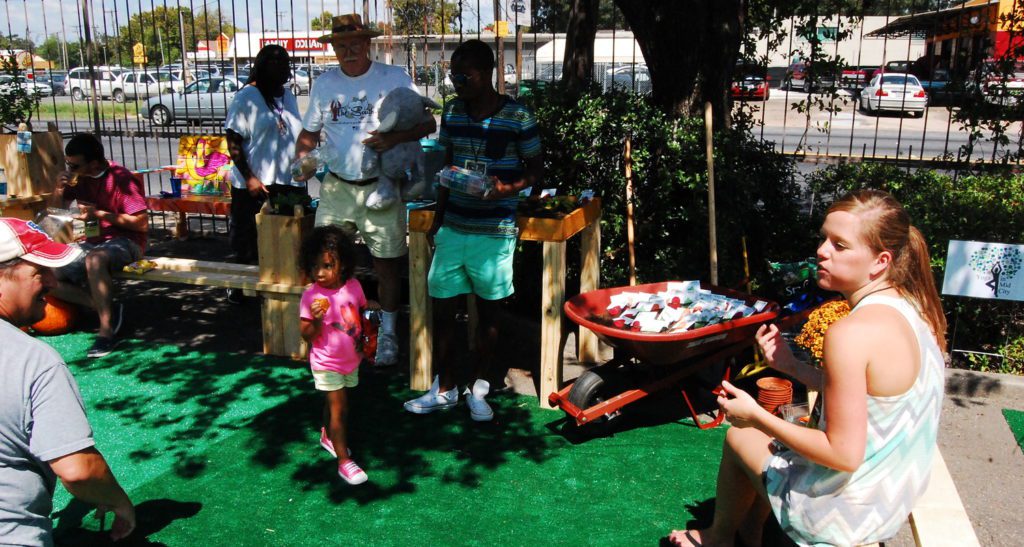
Park(ing) Day finds creative uses for small spots this Saturday
At about 9 feet by 19 feet, a parking space is just big enough to park a car. And that is how parking spaces are most often used–to park cars. When a car isn’t parked in the space, it is often left empty. But Park(ing) Day seeks to demonstrate that that space is also the perfect size for a coffee shop. A mini library. A tiny park. And by converting the parking space into a more community-friendly space, more people can use it. 
The first Park(ing) Day took place in 2005. Creative team Rebar transformed a San Francisco parking space into a small park. According to the firm’s website, Rebar wanted to “explore the the range of possible activities for this short-term lease, and to provoke a critical examination of the values that generate the form of urban public space.” The concept has grown from urban voyeurism to a worldwide phenomena. During 2011’s Park(ing) Day, nearly 1,000 parking space-sized community spaces were created around the world.
Lynley Farris, creative director of Mid City Studio, is one of the major forces behind the Baton Rouge version of Park(ing) Day. This Saturday, September 16, her team will transform drab parking spaces around the city into community spaces.
 Current estimates put the number of parking spaces in the United States as high as 2 billion. With the roughly 263 million cars in the United States, that means there are roughly eight spots for every car in the United States. Meanwhile, there are only 120,000 libraries and a meager 35,000 museums for all of America. “The idea [behind Park(ing) Day],” says Farris, “is to show people, this is what it could be like.”
Current estimates put the number of parking spaces in the United States as high as 2 billion. With the roughly 263 million cars in the United States, that means there are roughly eight spots for every car in the United States. Meanwhile, there are only 120,000 libraries and a meager 35,000 museums for all of America. “The idea [behind Park(ing) Day],” says Farris, “is to show people, this is what it could be like.”
Farris’ team has seven park(ing) spaces in the works, each with a different theme. The parking spot in front of Bee Nice House will serve as a library and book drive, while the Capital Heights Pocket Park will be transformed into a Vietnamese coffee shop. Bethel AME Church will even sponsor a mini gallery in one of its parking spaces. “Baton Rouge does things a little different for Park(ing) Day,” says Farris. But it keeps with the spirit of the cause.
Baton Rouge doesn’t boast the foot traffic of, say, San Francisco. But Farris points out that if the urban core were activated, foot traffic would be encouraged. “You’ll get people wanting to walk,” she promises.
Check out Mid City Studio’s Park(ing) Day page for a full list of this year’s participating “parks” and times.












